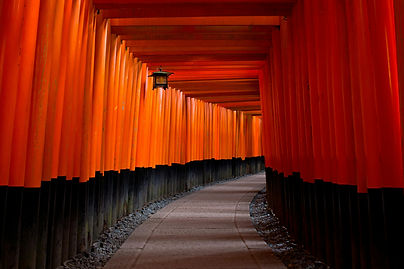The "Big's" of Japan
- justinlawton
- Mar 9, 2024
- 4 min read
Updated: Mar 11, 2024
We’ve all seen the word “Big” used to describe prominent groups of entities that are at the top of their field, discipline, or subject, quite frequently in a rival form of capacity. The word “Big” is usually followed by a number (3,4,5, etc.) to signify the number of representing entities.
In the field of sports (pun intended), you may have heard of the Big Three of the Miami Heat, comprised of players Lebron James, Dwayne Wade, and Chris Bosh who have gone on to win two NBA championships together or maybe the Big Four of tennis that is Roger Federer, Rafael Nadal, Novak Djokovic, and Andy Murray.
In the corporate sphere, perhaps the most well-known “Big” group is the Big Four accounting firms of Deloitte, KPMG, Ernst & Young (“EY”), and Pricewaterhouse Coopers (“PwC”), which are prominent global accounting networks. If we look back in history, Soviet leader Joseph Stalin, British Prime Minister Winston Churchill, and U.S. President Harry Truman were also collectively referred to as the Big Three at the Potsdam Conference following World War 2. Even in the world of anime, One Piece, Naruto, and Bleach are known as the Big Three due to their international popularity.
Truth be told, there are so many different versions of this idiom that unless you belong to that field, era, or country, chances are you may not even have heard about them. What’s more, is that these lists can change with time, and a particular “Big Three” or “Big Four” you see today may not be the same one year from now. For example, the Big Four accounting firms mentioned above were previously known as The Big Five, prior to the bankruptcy of Arthur Anderson following the Enron scandal.
For this article, let’s look into some of the major representative “Big” companies in Japan today.
Lawyer Up!
First of all, law firms aren’t really that “Big” to begin with. That’s because, in a lot of countries, there is a rule that only lawyers can have an ownership interest in a law firm. This means law firms cannot readily raise capital through initial public offerings as many corporations do and don’t grow to become major conglomerates we see in other fields. However, there are law firms that are comparatively larger and more prominent than their peers, and here are the Big Four law firms in Japan that are a cut above the rest:
Anderson Mori & Tomotsune
Mori Hamada & Matsumoto
Nagashima Ohno & Tsunematsu
Nishimura & Asahi
In recent years, the Big Five is also used to include TMI Associates, a firm that has been expanding and even has a presence in California.
It’s off to the Races
In the automobile industry, the Big Three could refer to:
German automobile companies: BMW, Mercedes-Benz, Volkswagen
United States automobile companies: Ford, General Motors, Stellantis
Or the following Big Three Japanese automobile companies:
Toyota
Nissan
Honda
Although the market capitalization of Toyota is far larger than the other two, these are all prominent global brands with offices and operations in many parts of the world. Separately from automobiles, Japanese motorcycle manufacturers have their own Big Four which include Honda, Suzuki, Yamaha, and Kawasaki.
Hold my Beer
The beer industry is brewing in Japan as more microbreweries emerge following a revision of tax laws in the 1990s and as consumers seek different tastes from mass-produced beer. However, the Big Four of Asahi, Kirin, Suntory, and Sapporo continue to dominate the domestic market and my own alcohol consumption.
It’s all About the Money
There are a lot of “Big’s” in the world of banking as many countries have different banks that dominate the local market in terms of revenue and assets. For Japan, The Big Three typically refers to Mitsubishi UFJ Financial Group, SMBC Group, and Mizuho Financial Group. These three are commonly referred to as Japan’s “megabanks” due to their scale and size.
Hammer Time
Construction is an extremely important industry for the earthquake and typhoon-prone country of Japan with over 450,000 companies domestically. These companies are referred to as General Contractors or Zenecon. Companies where sales exceed 1 trillion yen are referred to as Super Zenecon and currently 5 companies are categorized as such. The Big Five are:
Kajima Corporation
Obayashi Corporation
Shimizu Corporation
Takenaka Corporation
Taisei Corporation
Let’s Make a Deal
As already covered in my previous article on Japanese trading companies, the Big Five Japanese Sogo shosha are Mitsubishi, Mitsui, Sumitomo, Itochu, and Marubeni. In addition to these 5, Sojitz and Toyota Tsusho can be included to be collectively referred to as the Big Seven.
All Aboard
As an island nation, the shipping industry is an integral part of the Japanese economy. The Big Three shipping companies are Mitsui OSK Lines, Kawasaki Kisen, and Nippon Yusen. In 2018, the Big Three merged their container shipping business to form a joint venture called Ocean Network Express (“ONE”).
They're Everywhere
I feel I almost don't need to mention the Big Three convenience store chains because well... they're everywhere. Just within a 300meter radius of where I live (Yes, I measured and counted...), there are:
4 Seven Elevens
5 Family Marts
2 Lawsons
I almost wonder if there's a single prefecture in Japan that doesn't have all three chains. In any case, Ministop and NewDays certainly have a lot of catching up to do to play in the same league as the Big Three!
Side Fact: You may notice that you'll find a NewDays at a lot of JR stations. That's because the chain is managed by JR East.
To Conclude...
These are just some examples of Japanese companies that stand out in their respective areas and it'll definitely be interesting to see how the above lists evolve with time. If you have some examples you want to share, please do in the comments!




Comments